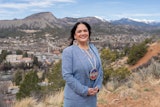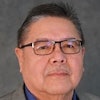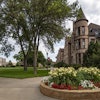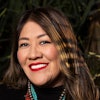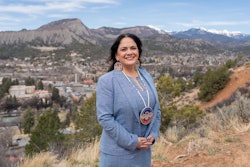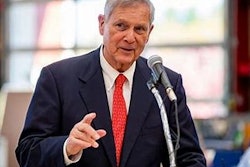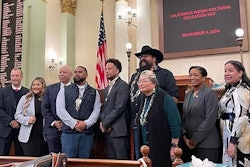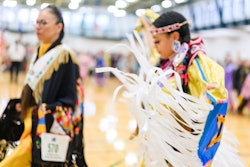Louie Gong, an education resource coordinator at Muckleshoot Tribal College in Auburn, Wash., is well-versed on issues of multiculturalism and mixed-race heritage but he isn’t an expert and has no intentions of becoming one.
In fact, he’s the “anti-expert.”
As an emerging voice for mixed-race populations, Gong refuses to make sweeping generalizations about a diverse group of people in the way an expert might.
“There is no one mixed-race experience. You can’t generalize what it is like to be a mixed-race person across geographical regions or socioeconomic statuses,” Gong says.
Gong, who has Native American, Chinese, Scottish and French heritage, is trying to assist a new generation in comprehending what it means to be multiethnic in America and he uses technology and the nonprofit organization he leads, called MAVIN, to do it.
Founded in 2000, MAVIN, which means “one who understands” in Yiddish, aims to raise awareness about the mixed-race experience. The organization sponsors a magazine, community events and an online resource library for people of mixed race.
The mixed-race experience is larger than the Black and White relationships that are most often explored, says Eric Hamako, a doctoral candidate in the University of Massachusetts, Amherst and a MAVIN board member. “Louie is really raising the profile of the mixed native, bringing socioeconomic status into the conversation and making connections between community members and the academic world.”
The 2000 U.S. census was the first to give Americans the option to check more than one box for race. Nearly 7 million people declared themselves multiracial that year, a number that’s expected to increase in the 2010 count.
While earning his master’s degree at Western Washington University, Gong discovered that there were more than 57,000 people in the U.S. with Native American, Caucasian and Chinese backgrounds. But growing up, Gong often felt like the only one.
Raised primarily by his grandfather, a first-generation Chinese immigrant, and his grandmother, a Native American, in Canada and in Washington state in the Nooksack tribal community, Gong spent the bulk of his adolescence straddling cultural lines and contemplating his own racial identity.
“On a daily basis, I was forced to move back and forth between multiple worlds. I’d wake up in the morning and eat a piece of bannock, a traditional (Native American) fry bread. After school, I ate Chinese food. My dad, a martial arts instructor, would pick me up and take me to Kung Fu class, then bring me back to the tribal community at night,” Gong says.
As a result, Gong underwent a tremendous amount of “probing” from people who didn’t understand his racial mix. Probing, says Gong, are those classic questions: What are you? Where you from? Where are your parents from?
“On their own, those questions sound pretty (innocuous). But when you consider the cumulative effect of hearing those questions every day year after year, it can cause someone to internalize the idea and think that they are peculiar,” Gong says.
Last year, Gong posted a short video clip on YouTube challenging members of the mixed-race community to define on their own terms who and what they are. The clip received 16,000 views and 23 response videos of mixed-race people debunking stereotypes and embracing all of their identities.
As a first-generation college graduate, Gong is committed to engaging Native American students in education.
“My grandma despite her 12 years of schooling at a Catholic boarding school had about a second-grade education,” says Gong, who has worked as a teacher, family therapist and counseling program coordinator. “When we would go to the grocery store, she would sign the check and I would fill out the check for her. She did not have access to a real education. I want to give Native people access to real education.”
